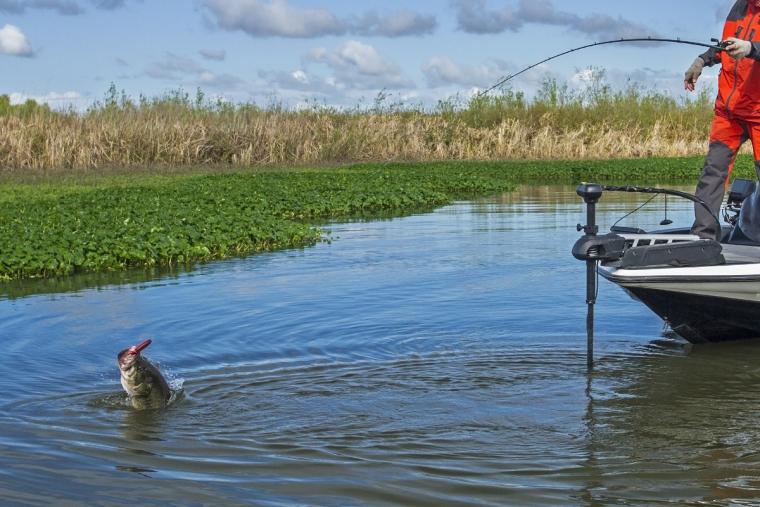

In a recent message to high school administrators, executive director Dr. Karissa Niehoff of the National Federation of State High School Associations, encouraged schools to engage more students in sports by thinking outside the football field and beyond the spirit squad on the sidelines.
Turns out, states are one step ahead. In March alone, a school district in Wisconsin added auto racing as a varsity sport – and the whole state of Utah added boys’ volleyball. High school bass fishing is growing exponentially, and bowling and archery are very much in demand.
Some students, it seems, would rather be out on the lake, in the bowling alley or on the racetrack than at the foot of a crowd on a football field. Still others would rather be gaming. And that’s something to be encouraged, celebrated and rewarded.
And while it’s unlikely that Friday night lights will be cancelled and replaced by Saturday morning bowling (or archery or racing or bass fishing), having more opportunities for engagement can only benefit students – particularly if event owners and venues begin making sure to incorporate younger age groups.
Some sports, like auto racing, are so new that categories for them aren’t even listed yet on the participation survey put forth by the NFHS. Others, however, have been itching for the chance to be listed as varsity sports in order to grow. One is boys’ volleyball.
According to an article in the Standard-Examiner, the Utah High School Activities Association announced that its Board of Trustees has voted to sanction boys volleyball beginning in the 2023-24 school year. A UHSAA press release noted that competition will begin in spring 2024.
“We’re very excited about seeing a new group of kids get to compete for a Utah state championship under our umbrella,” UHSAA assistant director Jon Oglesby told reporters. “We think it’s going to be a positive addition to the association’s sanctioned activities and will be a good thing for kids moving forward.”
The sport of volleyball has long been overwhelmingly played by women in this country. USA Volleyball has wanted to grow the boys’ game for a long time; in fact, a section on its website provides some ideas for recruiting more boys and also asks for help brainstorming solutions to create growth. USA Volleyball would like to bring more players into the pipeline for development at the higher levels of the game.
Then there’s esports, which grew explosively during the pandemic. According to an article published in 2021 on the National Education Association’s website, since 2018, when the NFHS first recognized esports as an official sport, more than 8,600 high schools have started video-gaming teams.
And it has a payoff, the website continues. One year, Lyons Township High School (LTHS) in suburban Chicago sent four kids to college with esports scholarships, according to Josh Nabasny, an engineering teacher who coaches the LTHS team, which started with 160 kids five in 2016.
“A lot of parents grew up in an age where video games never led anywhere,” Nabasny says. “This year, we’ll hold an informational meeting so that parents will understand that there are hundreds of colleges that offer scholarships. This is literally something your child could make money doing.”
Other sports are also on the grow among high school students, as was noted in a recent article in the SDM Blitz. The Aspen Institute and Resonant Education released the 2020-2021 “National Student Survey Analysis” in late November, a 44-page document that took into account the opinions of almost 6,000 students from public, private and charter high schools.
According to the survey, archery (which only one percent of students have ever tried, by the way) is the sport students most wish their school offered — especially among White, Hispanic and Asian students. Lacrosse and bowling ranked high on the wish list, too. The most requested sport for Black students was gymnastics.
When asked what additional physical activities outside of interscholastic teams students would like to participate in, strength training (35 percent) was the No. 1 choice, followed by biking (24 percent), skateboarding (21 percent), yoga (21 percent) and climbing (20 percent). Males showed a higher interest in strength training and parkour, and females favored yoga and dance.
Niehoff, in her most recent address, noted, “Offering new sport opportunities is already in motion in many states. The 2018-19 survey indicated participation by high school students in 70 different sports, as well as 14 adapted sports for students with disabilities. Some of the more popular non-traditional sports were bowling, weightlifting, badminton, flag football and archery. In addition to sports, schools should consider opportunities for student participation in performing arts and other activity programs. It is estimated there are currently six to eight million participants in music, speech and debate, and theatre programs, as well as other activities such as Scholastic Bowl, journalism, creative writing, academic competition, chess, yearbook, cheer/dance, art, newspaper/magazine production, math team, rodeo, among many others.”
Archery in particular has been trending upward at the youth, high school – and now, college levels – propelled to greater strength by its appearance in movies and television shows.
“Without kids wanting to compete and have a love for the sport of archery, the future of our association’s platform for growth of the sport would inevitably decline,” Ken White, vice president of marketing for the Archery Shooters Association, a Georgia-based organization that hosts amateur and professional competitions, said when promoting February’s Hoyt/Easton Pro/Am in Foley, Ala. “We want our youth competitors to develop that strong work ethic and receive a sense of accomplishment when they achieve their archery goals and have them continue to enjoy the sport just like their families have for many years.”

